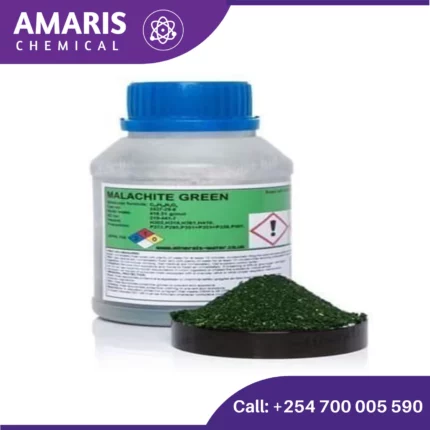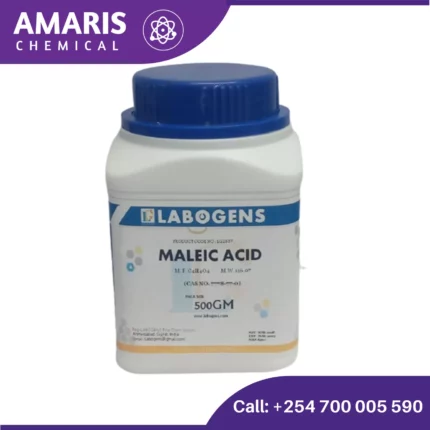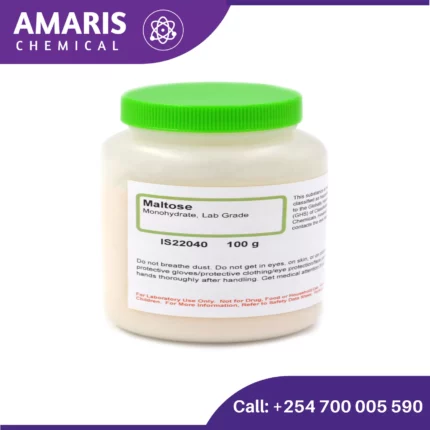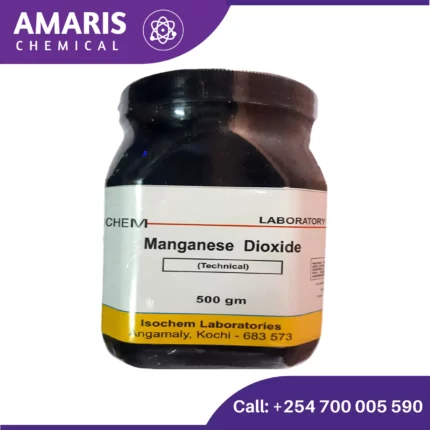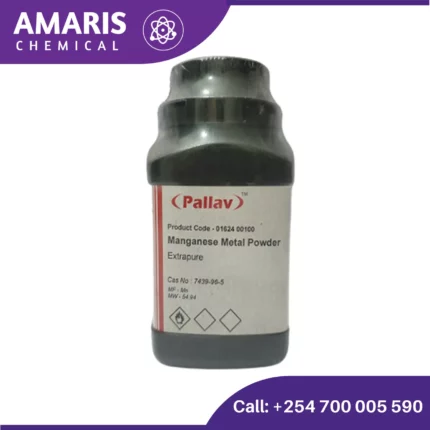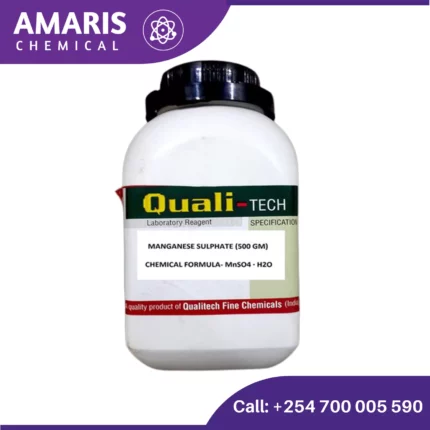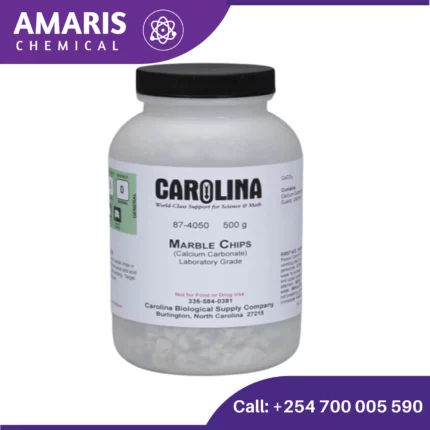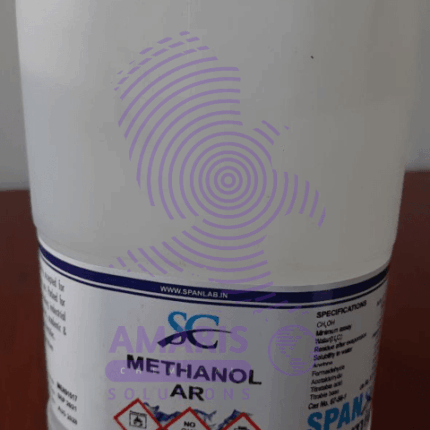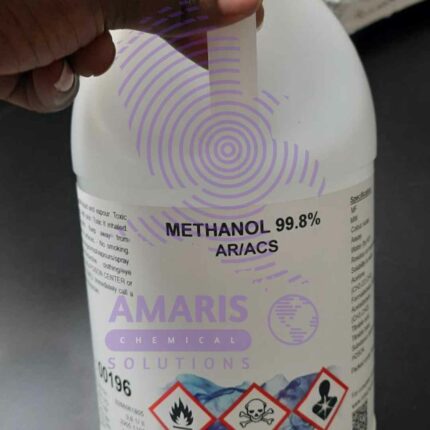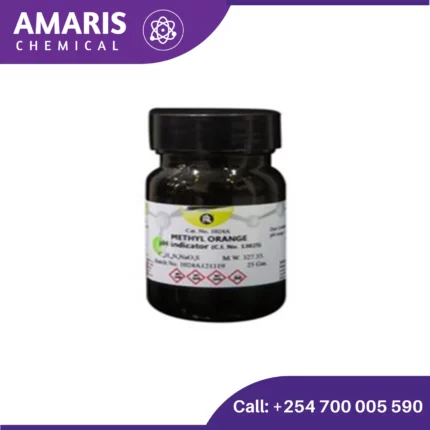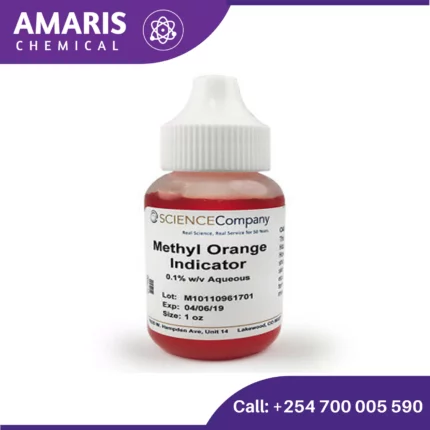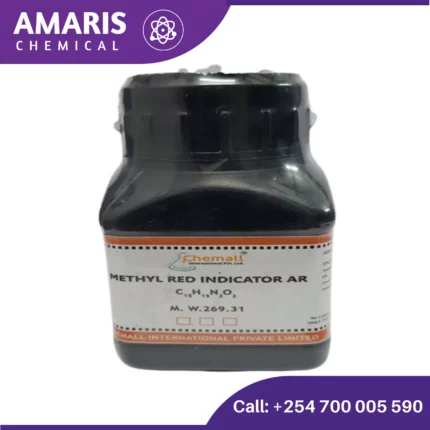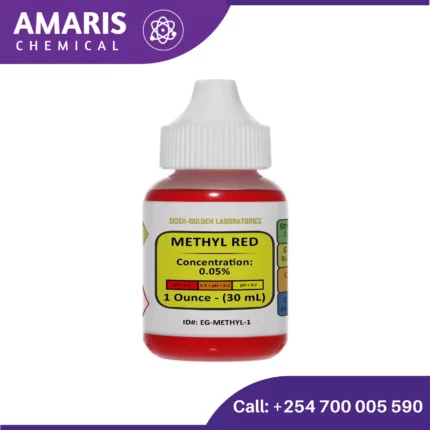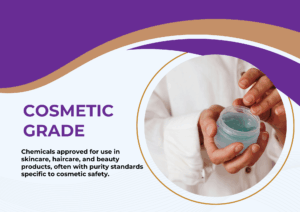Malachite Green 25gm
Malachite green is a synthetic dye primarily known for its vivid green color. Chemically, it belongs to the class of triarylmethane dyes. It's often used in microscopy and histology to stain tissues, where it binds to proteins and nucleic acids, aiding in the visualization of cellular structures under the microscope. In microbiology, it can be used as an indicator in growth media to distinguish between organisms based on their ability to metabolize certain substrates. However, it's important to note that malachite green is also known to be potentially toxic and should be handled with care in laboratory settings.
Manganese Dioxide 500gm
Manganese dioxide (MnO₂) is an inorganic compound that appears as a black or brown solid. It's a versatile material with a range of applications in various industries. Here are some key points about manganese dioxide:
Chemical and Physical Properties:
- Chemical Formula: MnO₂
- Molar Mass: 86.94 g/mol
- Appearance: Black or brown powder
- Density: 5.03 g/cm³
- Melting Point: Decomposes at 535 °C (not a true melting point)
Manganese Metal Powder 500gm
Manganese metal powder is a fine, grayish-white powder that primarily consists of manganese atoms. It is typically produced by reducing manganese dioxide with carbon, often in the presence of iron. This powder is known for its high purity and is used in various industrial applications, including as an alloying agent in the production of steel and aluminum alloys. Manganese metal powder is valued for its ability to improve the strength, hardness, and resistance to corrosion of metals when used in appropriate compositions. It also finds applications in chemical processes, batteries, and as a pigment in ceramics and glass production.
Manganese Sulphate 500gm
Manganese sulfate (MnSO₄) is an inorganic compound with several industrial and agricultural applications. Here are some key details about it:
Chemical Properties:
- Formula: MnSO₄
- Molecular Weight: 151.00 g/mol
- Appearance: Typically appears as a pale pink, crystalline solid.
- Solubility: Soluble in water, insoluble in ethanol and ether.
Methanol 2.5 liters extra pure
Methanol, also known as methyl alcohol, is a colorless, flammable, and highly volatile liquid alcohol with the chemical formula CH3OH. It is the simplest alcohol, consisting of a methyl group (CH3) linked to a hydroxyl group (OH). Methanol is commonly used as a solvent, fuel, and antifreeze agent. It is also used in the production of formaldehyde and other chemicals, and as a feedstock for the production of other substances such as olefins and biodiesel. Methanol is toxic and can be fatal if ingested or inhaled in high concentrations.
Methyl Orange Disodium Salt 25gm
Methyl Orange Disodium Salt is a synthetic dye commonly used as a pH indicator in titrations. It appears orange in neutral solutions and changes to yellow in alkaline conditions, providing a clear and distinct color transition. This dye is valued for its sharp and easily distinguishable color change around pH 3.1 to 4.4.
Key Characteristics:
- Appearance: Orange to yellow solid or powder.
- Solubility: Soluble in water.
- Color Change: Red to yellow as pH increases from acidic to slightly basic conditions.
Methyl Orange Solutions 500ml
Methyl Orange solutions are commonly used in laboratories as pH indicators. Here’s a brief description:
- Appearance: Methyl Orange solutions are typically orange-red in acidic conditions and yellow in alkaline conditions.
- pH Range: It changes color over a pH range of about 3.1 to 4.4.
- Uses: Primarily used in titrations, particularly in strong acid-weak base titrations, due to its distinct color change at a relatively low pH.
- Properties: It’s a versatile, effective indicator for determining the end point in various chemical analyses. The color transition makes it easy to observe the completion of a reaction.
Methyl Red 25gm
Methyl Red is a pH indicator commonly used in microbiology and chemistry. It turns red at a pH below 4.4 and yellow at a pH above 6.2, making it useful for detecting acidic environments. In microbiological tests, such as the methyl red test in the IMViC series, it's used to determine whether an organism produces stable acid end-products from glucose fermentation. The color change indicates the acidity of the solution, helping to differentiate between various bacterial species.
Methyl Red Solution 500ml
Methyl Red Solution is a pH indicator commonly used in microbiology and chemistry. It transitions from red to yellow as the pH changes from acidic to neutral or alkaline. It's particularly useful in the Methyl Red test, part of the IMViC series of tests for differentiating enteric bacteria.
Key Features:
- Appearance: Red to yellow solution depending on pH.
- pH Range: Typically used for pH ranges of 4.4 to 6.2.


